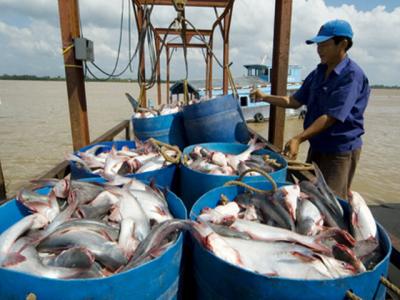10% increase in pangasius export value this year

The Ministry of Agriculture and Rural Development (MARD) has estimated a 10 per cent increase in pangasius export value this year to US$1.7 billion. It has also said that China could overtake the US as the largest buyer of pangasius from Vietnam.
Export of pangasius to the US and the European Union would continue to compete with other kinds of whitemeat fish in the EU market, anti-dumping duties and more stringent inspections of Vietnamese pangasiusby US agencies.
Amid difficulties exporters are having with leading markets like the US and the EU, the ministry advised that they also should focus on exploring Asian markets and tapping better the domestic market potential, besides traditional markets.
Local firms would find it easier to export to China, where Vietnamese pangasius products met required food standards and fetched reasonable prices. VASEP has estimated that pangasius exports to China will account for 20 percent of the total this year.
Duong Ngoc Minh, chairman and general director of Hung Vương JSC said pangasiusexports to China and Hong Kong could surge by almost 30 percent, year-on-year, but added firms should closely control the quality of their pangasius products to avoid trade barriers.
Minh also urged local enterprises to explore the domestic market further by selling pangasius products through the supermarket system.
VASEP general secretary Truong Dinh Hoe said Vietnam has 100 pangasius processors and exporters, with 20 of them accounting for 70-80 percent of local production. Local processors and exporters should find solutions to ensure that there is sufficient supply of pangasius to meet market demand.
Related news
 Viet Nam Trade Ministry urges Australia to lift ban on shrimp imports
Viet Nam Trade Ministry urges Australia to lift ban on shrimp imports Minister of Industry and Trade Tran Tuan Anh has just called on the Australian Government to soon lift its ban on prawn and uncooked shelled shrimp imports
 Viet Nam shrimp exports inched up in 2016
Viet Nam shrimp exports inched up in 2016 Vietnam’s shrimp exports in 2016 reversed the downward trend of 2015. After the negative growth of 25.3% in 2015, shrimp exports reported the positive
 VietNam pangasius exports to hit US$1.66 billion in 2016
VietNam pangasius exports to hit US$1.66 billion in 2016 In 2016, Vietnam’s pangasius was destined to 137 markets around the world, including the US (with the largest share of 23%), China (17%) and the EU